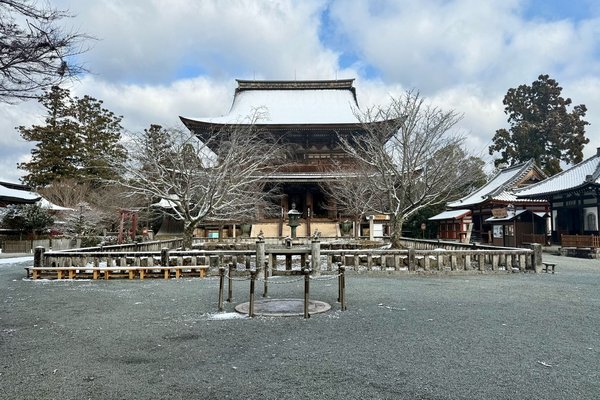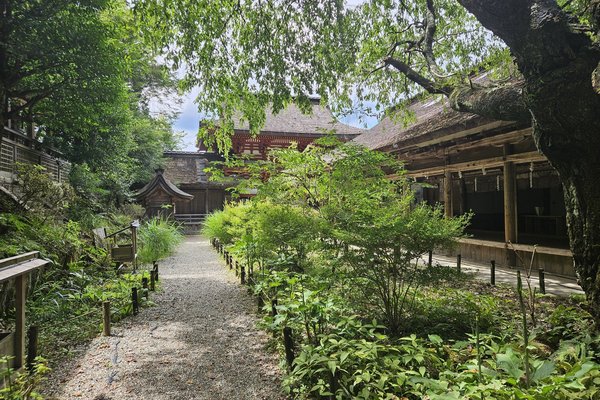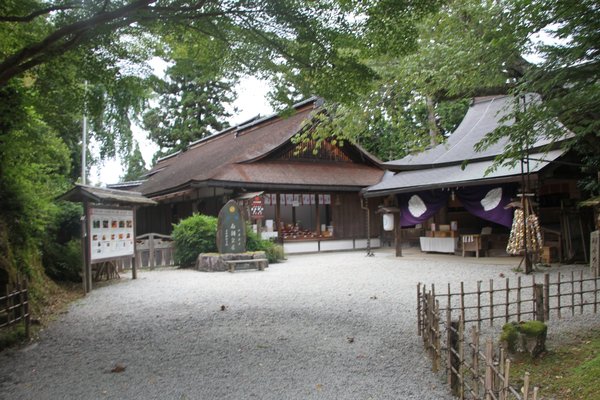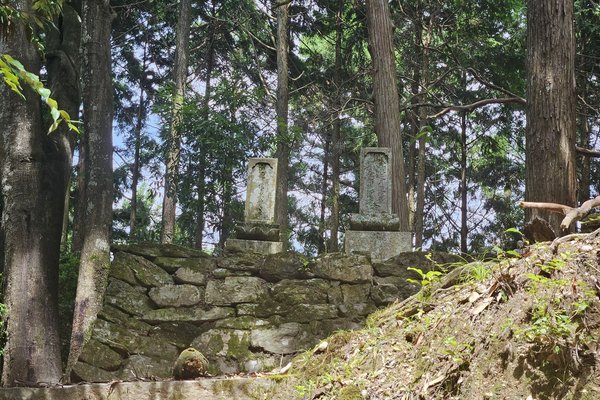Japan
Kii Mountain Range
The Sacred Sites and Pilgrimage Routes in the Kii Mountain Range are testimony to the indigenous Shinto belief and its fusion into Shinto-Buddhism.
These three sacred sites with Shinto shrines and Buddhist temples lie in the forests of the sacred Kii Mountains. They have attracted pilgrims since the 11th century. Their architecture has had a profound influence on the building of temples and shrines elsewhere in Japan.
Community Perspective: Koyasan is the most visited component, and one can easily arrange a temple stay here. John went to all three main sites, and Frederik, Hubert and Nan ‘did’ Yoshino, which lies close to Nara.
Site Info
Official Information
- Full Name
- Sacred Sites and Pilgrimage Routes in the Kii Mountain Range (ID: 1142)
- Country
- Japan
- Status
-
Inscribed 2004
Site history
History of Kii Mountain Range
- 2004: Inscribed
- Inscribed
- Type
- Cultural
- Criteria
- ii
- iii
- iv
- vi
Links
- UNESCO
- whc.unesco.org
- Official
-
- tb-kumano.jp — Kii Mountains
All Links
UNESCO.org
- whc.unesco.org — whc.unesco.org/
Official Website
- tb-kumano.jp — Kii Mountains
News Article
- April 16, 2022 mainichi.jp — NHK contractor damages World Heritage pilgrimage trail to Japan's Mt. Koya
- July 14, 2020 japantimes.co.jp — Sacred rope replaced above 133-meter waterfall at Japan World Heritage site
- May 13, 2019 7news.com.au — Australian woman plunges to her death at sacred Japanese world heritage site
- May 17, 2018 japantimes.co.jp — Monk sues temple at Mount Koya World Heritage site over heavy workload
- July 31, 2017 asia.nikkei.com — Japan's cash-strapped temples try their hand at tourism
- July 23, 2013 thestar.com.my — Financial crisis at Koyasan
- July 17, 2012 japandailypress.com — Nachi Falls violated by illegal climbers
- Sept. 14, 2011 yomiuri.co.jp — Typhoon No. 12 heavy rains damage WHS in the Kii Mountain Range
- June 30, 2008 mdn.mainichi.jp — Gyuba Doji, an ancient stone statue along the World Heritage Kumano Kodo pilgrimage route, was found vandalized with its head missing
Community Information
- Community Category
- Religious structure: Buddhist
- Religious structure: Indigenous
- Cultural Landscape: Associative
Travel Information
One million visitors or more
Discriminatory Entry Policies
Kyoto hotspot
Recent Connections
-
Perfect Inscriptions
2004 -
Invention of sweets and pastries
Nachiguro (candy) is modeled after the … -
Named after a Mountain
Kii Mountains
Connections of Kii Mountain Range
- Individual People
-
-
Toyotomi Hideyoshi
Yoshino is famous as a mountain cherry blossom beauty area, and it is said that the warlord Toyotomi Hideyoshi (1536-1598) who boasted overwhelming power at that time held a luxurious cherry blossom viewing party here in 1594.See www.jnto.go.jp
-
- Geography
-
-
Pacific Ocean
Shichirimihama, a flat sand and gravel Pacific coast has been serving as an integral part of the Kumano Sankeimichi Iseji pilgrimage route, part of Kii Mountain -
Hot Springs
Yunomine Onsen, part of Kumano Sankeimichi Nakahechi pilgrimage route (Kii Mountain) is a famous hot spring resort since ancient time
-
- Trivia
-
-
One million visitors or more
In 2023, the World Heritage site attracted about 1.39 million tourists from abroad and Japan // Kii's Koyasan (1.2 Million)
-
- History
-
-
Fusion
"unique fusion between Shintoism and Buddhism" -
Famous suicides
Kongobuji Temple, Koyasan is where Toyotomi Hideyoshi's nephew Toyotomi Hidetsugu committed 'seppuku' (ritual suicide) in 1595, considered as one of the most shocking seppuku in Japanese History.
-
- Ecology
-
-
Rainforests
Temperate Rainforest
-
- Architecture
-
-
Wooden architecture
3 Great Kumano Shrines, part of Kii - Koyasan
-
- Damaged
-
-
Thefts since inscription
Statue Head (Jun 20 2008)
-
- World Heritage Process
-
-
Perfect Inscriptions
2004 -
Minor modifications after inscription
2016: 13% increase in the length of the routes but only 2% of the area: redrawing of routes 2 and 3
-
- Religion and Belief
-
-
Sacred Mountains
Koyasan for Japanese Buddhism and Shinto -
Sacred Forests or Groves
Nachi Primeval Forest, part of WHS, is a 32 hectare sacred forest covering much of the area to the east of Nachi no Otaki, the sacred waterfall . -
Zen
Koyasan's Banryutei Rock Garden of Kongobu-ji Temple, is the largest zen garden in Japan -
Shinto
Yoshino, Omine and Kumano Sanzan -
Pilgrimage route
Three main pilgrimage routes: Omine Okugakemichi, Kumano Sankeimichi, Koyasan Choishmichi -
Pagoda
Koyasan - Konpon Daito, the main pagoda of the area
-
- Human Activity
-
-
Cultural Routes
Sacred Sites and Pilgrimage Routes in the Kii Mountain Range -
Invention of sweets and pastries
Nachiguro (candy) is modeled after the physical tiny rocks of the same name (Nachiguro Stone) in the Kumano area, and the candy is sold mainly in the Nachi Katsuura area but is also sold pretty much anywhere in Japan.
-
- Constructions
-
-
Funiculars
Koyasan cable car, "The line opened in 1930 as a route to Mount Kōya"See en.wikipedia.org
-
Cemeteries
Koyasan
-
- WHS on Other Lists
-
-
Cultural WHS set within an IUCN recognised protected area
Yoshino-Kumano National Park, IUCN Category II (National Park and Marine Protected Area)
-
- Timeline
-
-
Built in the 9th century
A number of the individual Buddhist and Shinto shrines have histories dating back to the 5C. E.g Seiganto-ji (Legend suggests this temple was founded in the early 5C) and Yoshino Mikumari-jinja (a Shinto shrine documented as early as 698) ... The Shinto religion which nurtures the spirit of nature worship has been practised in Japan since ancient times. In the 6th century Buddhism was introduced into Japan and adopted...in the second half of the 7th C. It did not supplant Shintoism. Instead .. a unique form of Shinto-Buddhism evolved, based on the belief that Japanese traditional gods are the incarnations of Buddhist deities. The Kii Mountains became the centre for this religious movement in the 9/10Cs (AB)
-
- WHS Hotspots
-
-
Kyoto hotspot
1h40 by train to Yoshino / 102km
-
- Visiting conditions
-
-
Discriminatory Entry Policies
Area around Mount Omine and Ominesanji Temple is out of bounds to women.
-
- WHS Names
-
-
Named after a Mountain
Kii Mountains
-
- Literature & Film
-
-
James Bond in Movies
You Only Live Twice (1967): Bond's 'wedding' takes place at Nachi.
-
News
- mainichi.jp 04/16/2022
- NHK contractor damages World Herit…
- japantimes.co.jp 07/14/2020
- Sacred rope replaced above 133-met…
- 7news.com.au 05/13/2019
- Australian woman plunges to her de…
Recent Visitors
Visitors of Kii Mountain Range
- AC
- Adam Hancock
- Afshin Iranpour
- Alexander Lehmann
- Alexander Parsons
- Alex Goh
- AlexSchedel
- Anna Wludarska
- Aspasia
- Atila Ege
- Bamse
- Bauchat
- BaziFettehenne
- Bill Koo
- Boj
- Can SARICA
- Carlo Sarion
- Celina Nanbara
- Chalamphol Therakul
- chenboada
- chenqtao
- Christoph
- Christravelblog
- Claire Bradshaw
- ctravel
- CugelVance
- cutecid
- cwthong
- Cyberczar
- Daniel Chazad
- Deffra
- Dimitar Krastev
- DL
- DouglasR
- Dr. Caligari
- Elaine McArdle
- Elisabeth Fransisca Situmorang
- Els Slots
- Errol Neo
- Eva Kisgyorgy
- Fan Yibo
- Feldhase
- Filip Murlak
- Frédéric M
- Frederik Dawson
- FS
- GabLabCebu
- Geert Luiken
- George Gdanski
- Harald T.
- henrik_hannfors
- henryjiao18
- Hubert
- Iain Jackson
- inomusay
- Jacob Choi
- Javier
- Jeffrey Chai
- jess4sythe
- JL
- Joel on the Road
- Jonas Kremer
- Jon Bauer
- Joyce van Soest
- Karito Vies
- Kasia M.
- Kasper
- Kurt Lauer
- lichia
- Loic Pedras
- Lucio
- Luke LOU
- Maciej Gil
- Manon R
- Mariam
- Marlies van Wolfswinkel
- Martinacurra88
- MaYumin
- M.HATADA
- Michael Turtle
- Mikko
- Morodhi
- Nafis N
- nan
- Nicolas
- Nihal Ege
- NoahFranc
- Nolan B.
- Patrik
- Paul Schofield
- Pchxiao
- Petteri
- Philipp Peterer
- Ralf Regele
- Randi Thomsen
- ReallyDeepThoughts
- Reisedachs
- Sergio Arjona
- Shandos Cleaver
- sncjob
- Squiffy
- Stanislaw Warwas
- Stijn
- Svein Elias
- Szabolcs Mosonyi
- Szucs Tamas
- TaiTT
- takanenohana
- Tamara Ratz
- Taotao Chen
- Thomas Buechler
- Thomas van der Walt
- Thorben
- Tonisan
- triath
- Truls Brekke
- Tsunami
- Valentina
- Vernon Prieto
- Vincent Cheung
- Wojciech Fedoruk
- Xiong Wei
- Xiquinho Silva
- Yongcheng Liu
- zman5455
- Zoë Sheng
Community Reviews
Show full reviews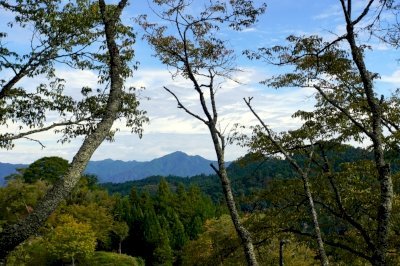
To visit the Kii Mountain WHS, Yoshino is the closest option from Nara. I visited Yoshino in September 2019 and spent a day and a half there. Yoshino is the starting point of the Ōmine Okugakemichi pilgrimage route that ends at the Kumano Hongū Taisha Shrine. I actually planned to hike the first part of the trail up to the Ōminesan-ji Temple and wanted to stay the night there. That would have been a hike of 16 km, from 500 m sea level over two peaks up to 1700 m, exhausting but doable in one day. However, I was a week too late, the temple is only open in the warm months and was already closed at the end of September. So, I did a shorter hike to Shisuniwa peak, about halfway, and stayed in Yoshino.
Yoshino, or more precisely the mountain region Yoshino-yama, is an important centre of Shugendō, a syncretistic belief, whose practitioners seek spiritual power through ascetic practices in the sacred mountains. Asceticism and spirutuality are certainly not the first associations that arise when you step out of the cable car at the mountain station. The street through the village is lined with restaurants and shops. However, in late September, only about a third of them were open (and those that were open closed very early in the evening), but it is obvious that Yoshino is well prepared for the tourist rush in the peak seasons, such as the cherry blossom season.
There are …
Keep reading 0 comments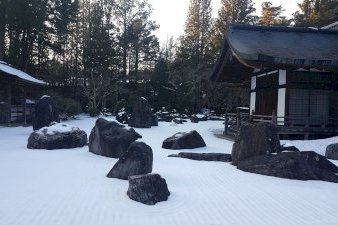
WHS#81
Pilgrimage seems to be a widespread phenomenon around the world. I've been to enough pilgrimage destinations in Europe and the Levant to get the feel of it. It can be crazy how far pilgrims back in the day would go to see these holy sites, but look at us travelers now. My personal favorite until recently was probably Lourdes in France, mostly for the unique bathing experience it offers and the overall holy atmosphere of the site, even in comparison to sites in the Holy Land. Until I visited the Kii Mountains, that is. I visited Koyasan in December 2019, and it had snowed hard the night before, resulting in one of the most surreal sights I have ever seen. Coming from the Philippines, I will never turn down a chance to play in snow, and its presence on the roofs and yards of temples made this pilgrimage town so much more beautiful. I made use of the Koyasan World Heritage Pass for this day trip, though it's valid for 2 days. It can be purchased in Tengachaya Station, which was a few minutes from my accommodation and therefore, quite convenient. In other cases, it can also be bought in Shin-Imamiya and Namba closer to the city center of Osaka, as well as in Hashimoto for a lower price. It's definitely convenient and recommendable. Anyway, it generally takes 1.5-2 hours to get to the Koyasan station where you can take a bus to your destinations.
First stop …
Keep reading 0 comments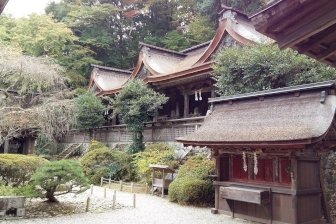
As a day trip from Nara I visited Yoshino to see the Kii Mountains. From the valley where the train station is located I took a cable car up the hill. I arrived in a tourist village with plenty of shops and restaurants. The village also contains Kinpusen-ji, an important temple of the region.
From the village I set out to hike along the pilgrim path into the Kii Mountains. On my way I crossed multiple temples and everything quieted down; there were not that many hikers, but that may have been caused by me visiting outside vacation season.
Along the trail I passed several temples, e.g. Kinpu Shrine shown in the picture. However, the scenery wasn't great as this is still a fairly civilized area. Some parts were even open to logging activities. Personally, I would have liked to venture further into the mountain range, probably with an overnight. My expectation would be that the more remote parts should offer a better experience. Still, I had a nice time.
Arriving in autumn I did miss on the most famous feature of Yoshino, though. The Japanese believe Mount Yoshinoyama to be Japan's best cherry blossom viewing spot.
Getting There
There are several access points to the Kii Mountains. From Nara you can go to Yoshino by direct train. Be aware that the train line is private and not included in the Japan Rail pass. Along the way you will pass the tentative site of …
Keep reading 0 comments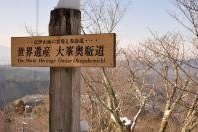
From all sacred sites and pilgrimage routes that were combined to be this WHS, I chose to visit Yoshino, the area that famous for its Sakura viewing in springtime and has long history that one time was the capital city of Imperial Court of Japan. From the ground, Mount Yoshino was a typical mountain on the Kii Mountain Range, but when entering the forest, many small shrines, torii gates appeared to confirm that this place was special.
Visiting Yoshino was very accessible by train and cable tram which bring tourist from the city of Yoshino below to the village on the higher level of the mountain. From the station, the town was full of shop selling food and souvenir, not a sacred mountain as I was expected, but a typical Japanese tourist attraction. The central of the town was the Kimpusan-ji Temple which holding many Japanese national treasures. The star of the temple was the main temple gate, which guarded by a large statue of giant, the facial expression of the statues was truly exceptional realistic, and the temple's main hall which is the second largest wooden building in this country.
After the temple, I continued my visit along the pilgrimage route to the top of the mountain, the view of Yoshino from the viewing spot along the way were really beautiful. The roof of Kimpusan-ji was dominated the skyline of the whole town. Apart from the religious sites, Yoshino was also famous for its sushi, which …
Keep reading 0 comments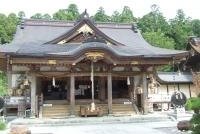
I started my visit to this site at Shingu and visited the three shrines in this area. The Hayatama shrine, set in a wooded area on the edge of Shingu town comprised several scarlet painted wooden buildings with tile roofs. The Hongu shrine was a 90 minute bus ride from Shingu passing several spa resorts along the way. The buildings at this shrine were of natural timber with gold trimmings and with steep thatched roofs. The Nachi shrine and Sagantoji temple was a much larger collection of buildings, both natural and painted spread over a hillside. There is also an elegant scarlet painted pagoda. Buses to this shrine leave from Nachi station, a few stops along the line from Shingu. Many steps lead from the bus stop up to the shrine.
Next I moved on to the Koyasan area and first visited the Jison-in temple in Kudoyama. This temple marks the starting point of the Koyasan Pilgrimage Route, with its 180 stone markers showing the route to the summit. This temple was the resting place for women, as only men were permitted to ascend Koyasan. Today the temple is dedicated to women.
I then ascended Koyasan using the train and cable car and toured the sites at the summit using the local buses. I went first to the Okuno-in and walked through a huge graveyard with interestingly designed tombs and reached the Torodo and Gobyo mausoleums. I also visited the Kangobuji temple and the ancient Danjo Karan shrine with its …
Keep reading 0 comments
I went to Koya-san at the end of my month-long stay in Japan. Stayed at the Sekisho-in, at the east end of the town. After morning service (Shingon) and breakfast, walked to Kukai's mausoleum. The cemetery was serene, with the snow filtering down between the aged cedars. It was like an open-air cathedral, and the walk akin to a pilgrimage (which is probably how the Japanese experience it). My map indicated that many of Japan's military leaders have their tombs in the cemetery, and "burial" there is akin to that of Pere Lachaise in Paris.
Later saw the Dai-to or great stupa/pagoda. Aside from its' proportions, I was more impressed by the three-dimensional manadala that was created inside. Apart from the artistic quality of the sculpture (which is modern), for me it conjured up the image of the 'axis mundi', that Borobadur in Indonesia does. Circumabulated the altar five times before departing. I'd go there again, though for many, it might remain a curiosity for them.
In the motuary temple (just short of the actual mausoleum) a monk was conducting a fire ritual at one of the chapels.
Keep reading 0 comments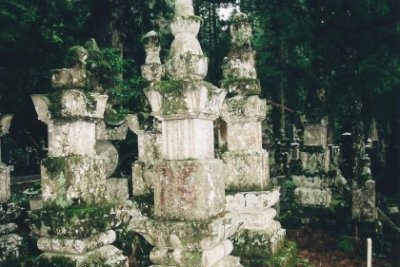
The most well-known part of this WHS - Koyasan - I visited on my second trip to Japan. This temple town has the usual Japanese abundance of souvenir shops and restaurants: don't expect it to be very serene.
Most of the temples are grouped in the western part of town. Their designs are all very different. Okuno-In, the temple that houses the body of Kobo-Daishi, is on the other side of town. Going there you have to cross a large cemetery, covered in moss and hidden under huge dark trees.
An experience not to be missed here is staying overnight in one of the temples. The local Tourist Information can arrange this. The Fudo-In was my accommodation: very quiet (only 2 young monks seemed to be living there), with great food and a fine traditional bath.
Keep reading 0 comments
